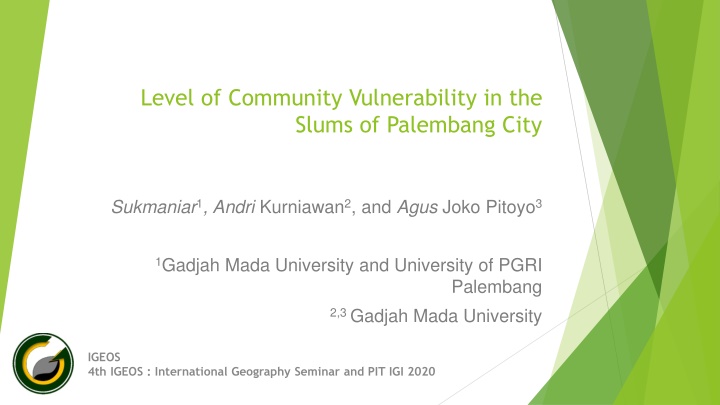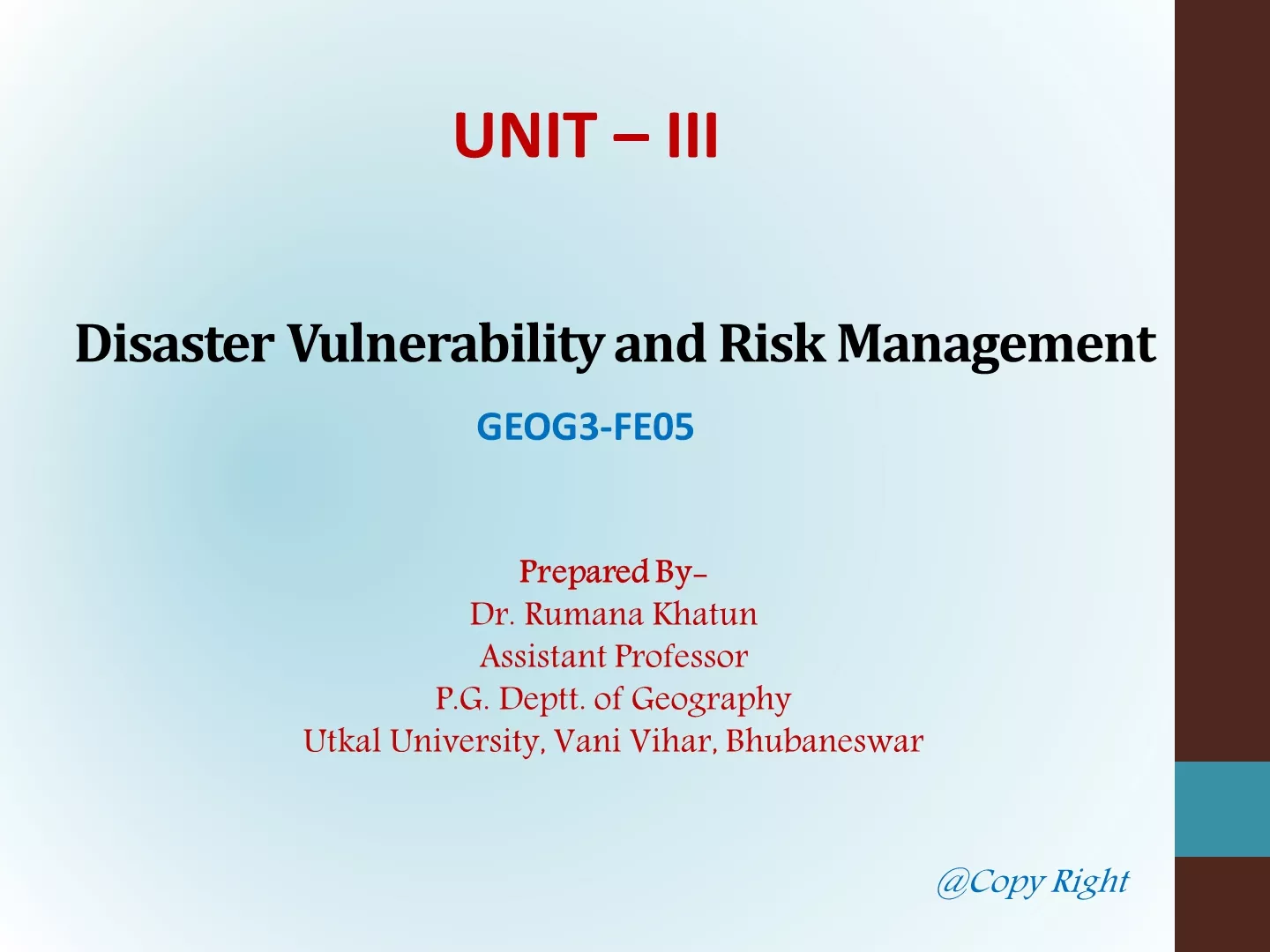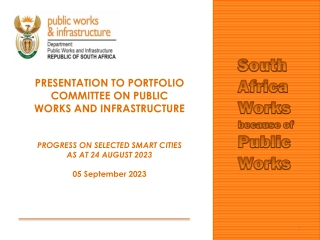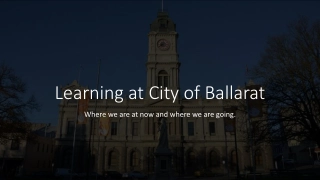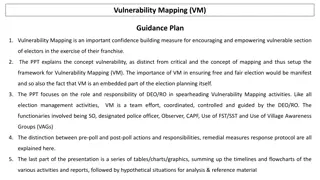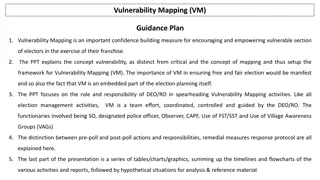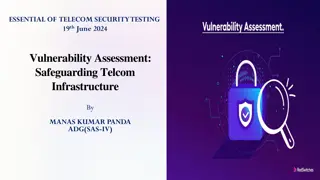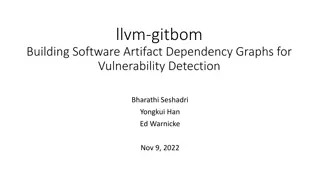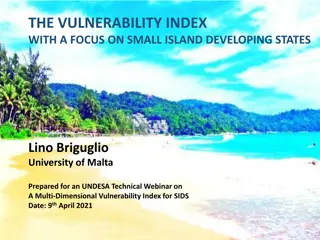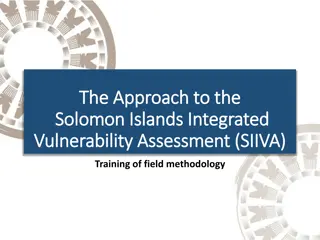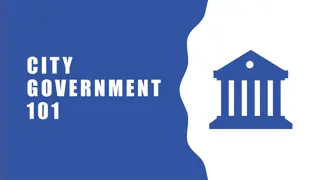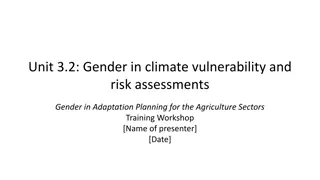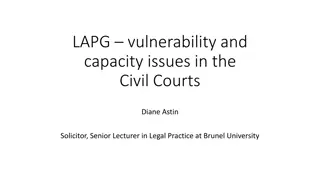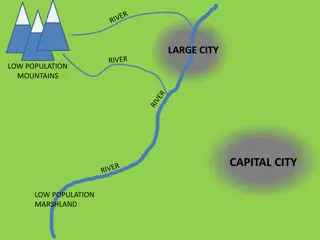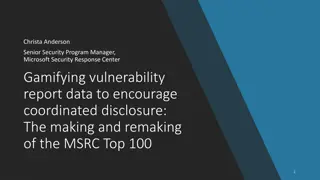Level of Community Vulnerability in Slums of Palembang City
Slums areas in Palembang City exhibit high levels of vulnerability, particularly impacting children, pregnant women, buildings along the Musi river bank, and family income. The study assesses vulnerability from physical, social, and economic perspectives to urge governmental action for better policies and disaster risk reduction.
Download Presentation

Please find below an Image/Link to download the presentation.
The content on the website is provided AS IS for your information and personal use only. It may not be sold, licensed, or shared on other websites without obtaining consent from the author.If you encounter any issues during the download, it is possible that the publisher has removed the file from their server.
You are allowed to download the files provided on this website for personal or commercial use, subject to the condition that they are used lawfully. All files are the property of their respective owners.
The content on the website is provided AS IS for your information and personal use only. It may not be sold, licensed, or shared on other websites without obtaining consent from the author.
E N D
Presentation Transcript
Level of Community Vulnerability in the Slums of Palembang City Sukmaniar1, Andri Kurniawan2, and Agus Joko Pitoyo3 1Gadjah Mada University and University of PGRI Palembang 2,3 Gadjah Mada University IGEOS 4th IGEOS : International Geography Seminar and PIT IGI 2020
Introduction Slums areas are identical with vulnerability, especially in the city areas [1]. The migrants were usually from the low level of economy and they would live in slums [2]. Hence, those in the low level of economy were vulnerable [3]. What is more, the houses were uninhabitable and lack of infrastructure [4]. When it occurred, the people in the slums would lose their dwelling [5]. Elderly and children are also vulnerable to diseases and death [6]. Further, women are also included in the category [7]. The condition indicated that the vulnerable people were not wanted by the government and other communities [8]. Therefore, the study explains the level of vulnerability of the slum areas in Palembang City from physical, social, and economic aspects. It is expected that the government offers factual policies to help the vulnerable people and to decrease the disaster risk in the slums of Palembang City.
Methods The study employed quantitative method.The samples were 382 families living in 64 slum areas in Palembang City. The data were collected using a survey, which were then analyzed using statistic calculation with K-means Cluster. The analysis was to identify the clusters with specific vulnerability in the slum areas of Palembang City. The distribution was observed using Arcgis program, which helps to identify the cluster of vulnerability through a field survey. The data were taken directly from the research location, which was in the slums of Palembang City.
Conclusion Slums presented high vulnerability, especially to children, pregnant women, buildings on the Musi river bank, semipermanent and nonpermanent buildings, as well as family income. In spatial aspect, the areas were in moderate and high level of vulnerability. Those living on the bank and branch of Musi River were in high category. The slums were mostly in moderate level of vulnerability.
References [1] [2] Nations, U. 2018. Revision of World Urbanization Prospects. United Nations: New York, NY, USA. Sukmaniar, Pitoyo, A. J., & Kurniawan, A. 2020a. Urbanization philosophical perspective of slum settings in The City Of Palembang. IOP Conf. Ser.: Earth Environ. Sci. 451 012105 Sukmaniar, Pitoyo, A. J., & Kurniawan, A. 2020b. Vulnerability of economic resilience of slum settlements in the City of Palembang. E&ES, 451(1), 012106. Joshi, M. Y., Flacke, J., & Schwarz, N. 2020. Do microfinance institutes help slum-dwellers in coping with frequent disasters? An agent-based modelling study. International Journal of Disaster Risk Reduction, 101627. Roy, D., & Lees, M. 2020. Understanding resilience in slums using an agent-based model. Computers, Environment and Urban Systems, 80, 101458. Kyobutungi, C., Ziraba, A. K., Ezeh, A., & Y , Y. 2008. The burden of disease profile of residents of Nairobi's slums: Results from a Demographic Surveillance System. Population health metrics, 6(1), 1. Wamukoya, M., Kadengye, D. T., Iddi, S., Chikozho, C., & System, D. S. 2020. The Nairobi Urban Health and Demographic Surveillance of slum dwellers, 2002 2019: Value, processes, and challenges. Global Epidemiology, 100024. Nuranisa, Mei, E. T. W., Giyarsih, S. R., Sukmaniar, Saputra, W., & Putri, M. K. 2020. Socioenomic Vulnerability Level in the Demographic Bonus Era among Musi Riverbanks Community, the City of Palembang. Test Engineering & Management, May June 2020, 6493 6502 [3] [4] [5] [6] [7] [8]
